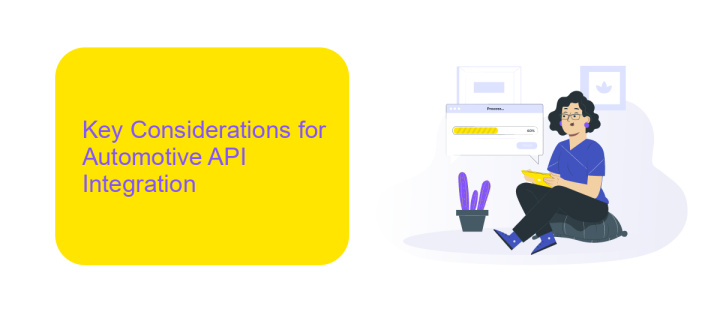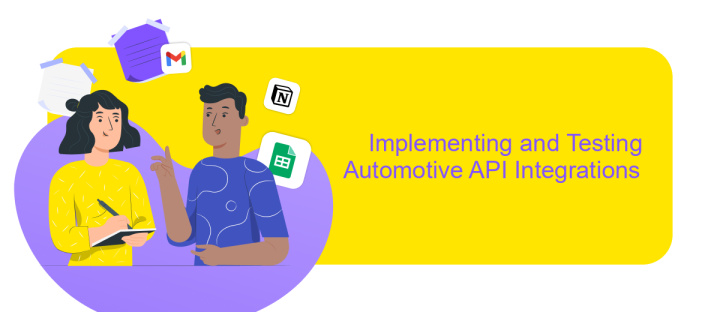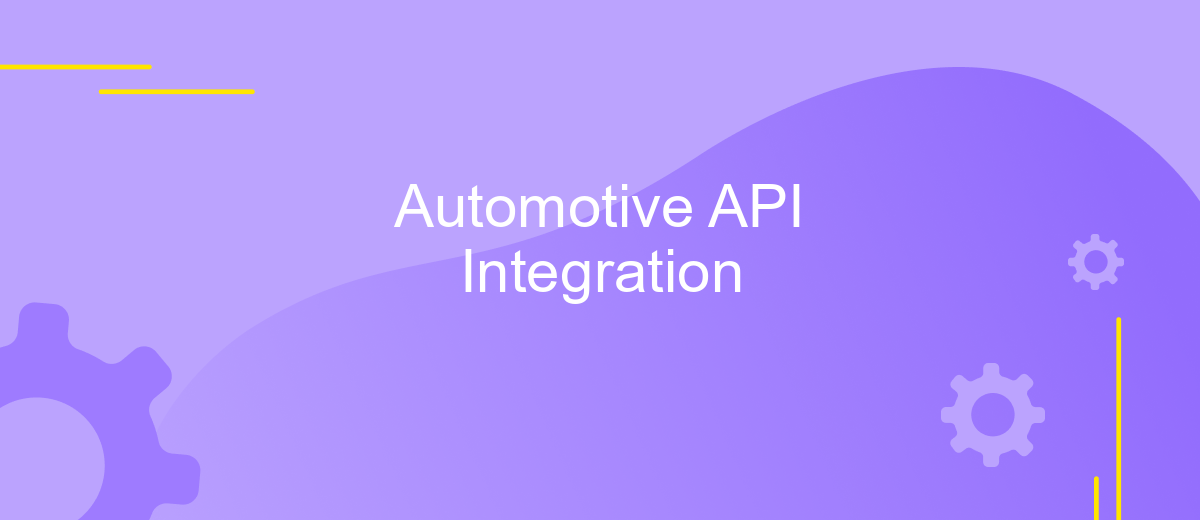Automotive API Integration
In today's rapidly evolving automotive industry, the integration of Application Programming Interfaces (APIs) has become a cornerstone for innovation and efficiency. Automotive API integration facilitates seamless communication between diverse systems, enabling enhanced vehicle connectivity, real-time data exchange, and improved user experiences. This article explores the significance of API integration in the automotive sector, highlighting its role in driving technological advancements and transforming the way vehicles interact with their digital ecosystems.
Understanding Automotive APIs and Their Potential
Automotive APIs are revolutionizing the way we interact with vehicles and the automotive ecosystem. By enabling seamless communication between software applications and vehicle systems, these APIs unlock a plethora of possibilities for developers and businesses alike. From enhancing in-car experiences to optimizing fleet management, the potential of automotive APIs is vast and transformative.
- Vehicle Data Access: APIs provide real-time access to vehicle diagnostics, performance metrics, and maintenance alerts.
- Telematics Integration: They facilitate the integration of telematics services for tracking and monitoring vehicle locations and behaviors.
- Infotainment Enhancements: APIs enable the development of advanced infotainment systems that offer personalized content and services.
- Smart Mobility Solutions: They support the creation of innovative mobility solutions like ride-sharing and autonomous driving applications.
As the automotive industry continues to evolve, the role of APIs is becoming increasingly critical. They not only enhance connectivity and functionality but also pave the way for new business models and services. By leveraging automotive APIs, developers can create cutting-edge applications that meet the growing demands of modern consumers and drive the industry forward.
Key Considerations for Automotive API Integration

When integrating automotive APIs, it's crucial to ensure data security and compliance with industry standards. Automotive APIs often handle sensitive information, such as vehicle diagnostics and personal driver data, making robust encryption and authentication methods essential. Additionally, understanding the specific requirements of each API, such as data formats and rate limits, is vital to ensure seamless integration and avoid disruptions in service.
Another key consideration is the selection of the right integration platform to streamline the process. Tools like ApiX-Drive can significantly simplify the integration by providing pre-built connectors and an intuitive interface, reducing the need for extensive coding. This not only accelerates the deployment process but also minimizes potential errors. Moreover, ensuring scalability and flexibility in the integration architecture is important to accommodate future updates and expansions in automotive technology. By addressing these considerations, businesses can effectively leverage automotive APIs to enhance connectivity and improve user experience.
Choosing the Right Automotive APIs for Your Needs

When integrating automotive APIs, selecting the right ones is crucial for optimal functionality and efficiency. With a myriad of options available, it's essential to focus on your specific needs and objectives. Consider the scope of your project, the data you need access to, and the functionalities you wish to implement. A well-chosen API can significantly enhance your application, providing seamless connectivity and advanced features.
- Identify Core Requirements: Clearly define the functionalities you need, such as vehicle diagnostics, navigation, or telematics.
- Evaluate API Documentation: Check for comprehensive documentation and support resources to ensure ease of integration and troubleshooting.
- Consider Compatibility: Ensure the API is compatible with your existing systems and platforms to avoid integration issues.
- Assess Data Security: Prioritize APIs that offer robust security measures to protect sensitive vehicle and user data.
- Review Cost and Licensing: Consider the pricing model and licensing terms to align with your budget and long-term strategy.
By carefully assessing these factors, you can choose automotive APIs that align with your project goals and technical requirements. This strategic approach ensures a successful integration, enhancing your application's capabilities and user experience.
Implementing and Testing Automotive API Integrations

Implementing automotive API integrations requires a strategic approach to ensure seamless connectivity between systems. The first step involves thoroughly understanding the API documentation. This includes familiarizing oneself with the endpoints, authentication methods, and data formats. Proper planning and design are crucial to avoid integration pitfalls and ensure that all functionalities align with business requirements.
Once the design phase is complete, the development process begins. Developers should focus on writing clean, efficient code that adheres to best practices. Utilizing version control systems can help manage changes and collaborate effectively. Testing is a critical component of the integration process, as it helps identify and rectify potential issues before deployment.
- Conduct unit tests to verify individual components.
- Perform integration tests to ensure different systems work together.
- Use automated testing tools for consistent and repeatable results.
- Engage in user acceptance testing to gather feedback from stakeholders.
After thorough testing, the integration can be deployed to a production environment. Continuous monitoring is essential to maintain system performance and address any emerging issues promptly. By following these steps, organizations can achieve a robust and reliable automotive API integration.
- Automate the work of an online store or landing
- Empower through integration
- Don't spend money on programmers and integrators
- Save time by automating routine tasks
Best Practices and Future Trends in Automotive API Integration
When integrating APIs in the automotive industry, adhering to best practices is crucial for ensuring seamless operations and enhanced functionality. Prioritize robust security measures to protect sensitive data, and ensure compliance with industry standards such as ISO 26262 for functional safety. Opt for modular and scalable API designs to accommodate future technological advancements and increased data loads. Testing and monitoring APIs consistently can help identify potential issues early, thereby minimizing downtime and enhancing reliability. Utilizing platforms like ApiX-Drive can streamline the integration process, offering automated workflows and real-time data synchronization, which can significantly reduce manual efforts and errors.
Looking ahead, the future of automotive API integration is poised to be shaped by emerging technologies such as artificial intelligence and machine learning. These technologies promise to enhance predictive maintenance and autonomous driving capabilities. The rise of electric and connected vehicles will further drive the demand for more sophisticated API solutions, enabling seamless connectivity between vehicles and smart infrastructure. Staying updated with these trends will be vital for automotive companies aiming to maintain a competitive edge and deliver innovative solutions to consumers.
FAQ
What is Automotive API Integration?
How does API integration benefit automotive businesses?
What challenges might arise during automotive API integration?
How can automotive companies ensure data security during API integration?
What tools can assist with automotive API integration?
Do you want to achieve your goals in business, career and life faster and better? Do it with ApiX-Drive – a tool that will remove a significant part of the routine from workflows and free up additional time to achieve your goals. Test the capabilities of Apix-Drive for free – see for yourself the effectiveness of the tool.


